Email marketing for Web3 projects can be your next opportunity to build relationships with your audience. Established crypto, blockchain, NFT, and DeFi projects have recognized the power of newsletters and email marketing to grow their communities and engage with their followers. Explore how you can leverage email marketing for your web3 project.

How does email marketing work?
Email marketing isn’t a new strategy. Marketers and project founders are familiar with newsletters and likely receive them weekly in their inboxes.
However, it’s crucial to understand the intention of newsletters. Email marketing is direct communication between a brand and its audience. By collecting email addresses through signups or subscriptions, brands can send targeted messages, offers, and updates directly to the inboxes of their audience. This direct line of communication can help build trust, create loyalty, and drive conversions.
What platforms should web3 projects use for email marketing and newsletters?
There are many email marketing platforms to choose from, but for Web3 projects, we recommend using platforms that are blockchain-focused and have built-in tools for NFTs and DeFi. Some popular options include SendGrid, Mailchimp, and Revue.
When does a newsletter make sense for a brand?
A newsletter makes sense for any brand that wants to stay in touch with its audience on a regular basis. Furthermore, It’s a great way to keep your subscribers up-to-date on new developments, upcoming events, and promotions. It’s also an effective way to build brand loyalty and keep your audience engaged.
How to get people to subscribe to your Newsletter
To get people to subscribe to your newsletter, you need to offer something of value. This could be exclusive content, discounts, or early access to new products or services. You can also use pop-ups or signup forms on your website to encourage people to subscribe.
How to leverage partnering brands in your newsletter strategy
Partnering with other brands in your newsletter strategy can be a great way to reach a new audience and build credibility. You can collaborate on content, promotions or even co-host events. How to make a newsletter compelling and keep users engaged
To make your newsletter compelling, you need to provide value and keep your content fresh and interesting. This could mean sharing news and updates, highlighting user-generated content, or offering exclusive content or promotions.
How frequently should you send newsletters?
The frequency of your newsletters depends on your audience and the content you’re sharing. Some brands send newsletters weekly, while others send them monthly or even quarterly. The key is to find a frequency that works for your audience and stick to it.
A/B testing your newsletters for optimization
A/B testing your newsletters involves sending two versions of the same newsletter to a small subset of your audience to see which one performs better. You can test things like subject lines, content, and
Ready to get started?
If you’re still curious about email newsletter marketing, check out our previous blog for additional tips to create an engaging email marketing campaign.
